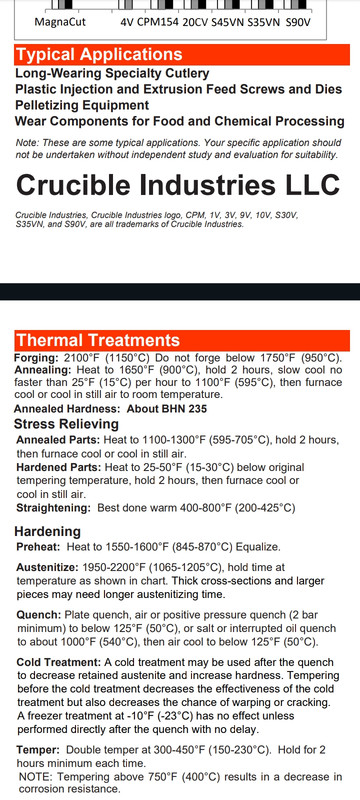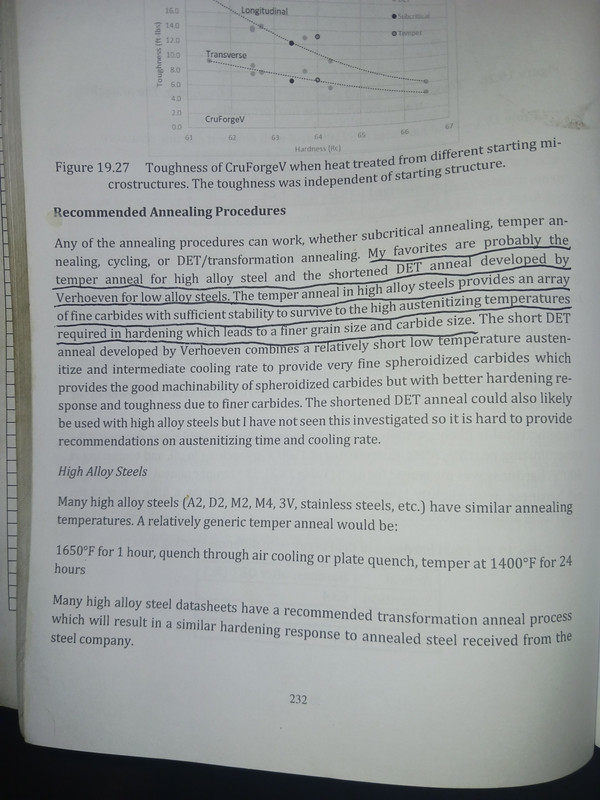DeadboxHero
Knifemaker / Craftsman / Service Provider
- Joined
- Mar 22, 2014
- Messages
- 5,444
Some bad advice in here.
We don't anneal air hardening steels without forging/rolling first to avoid massive grain growth.
We don't anneal air hardening steels without forging/rolling first to avoid massive grain growth.



